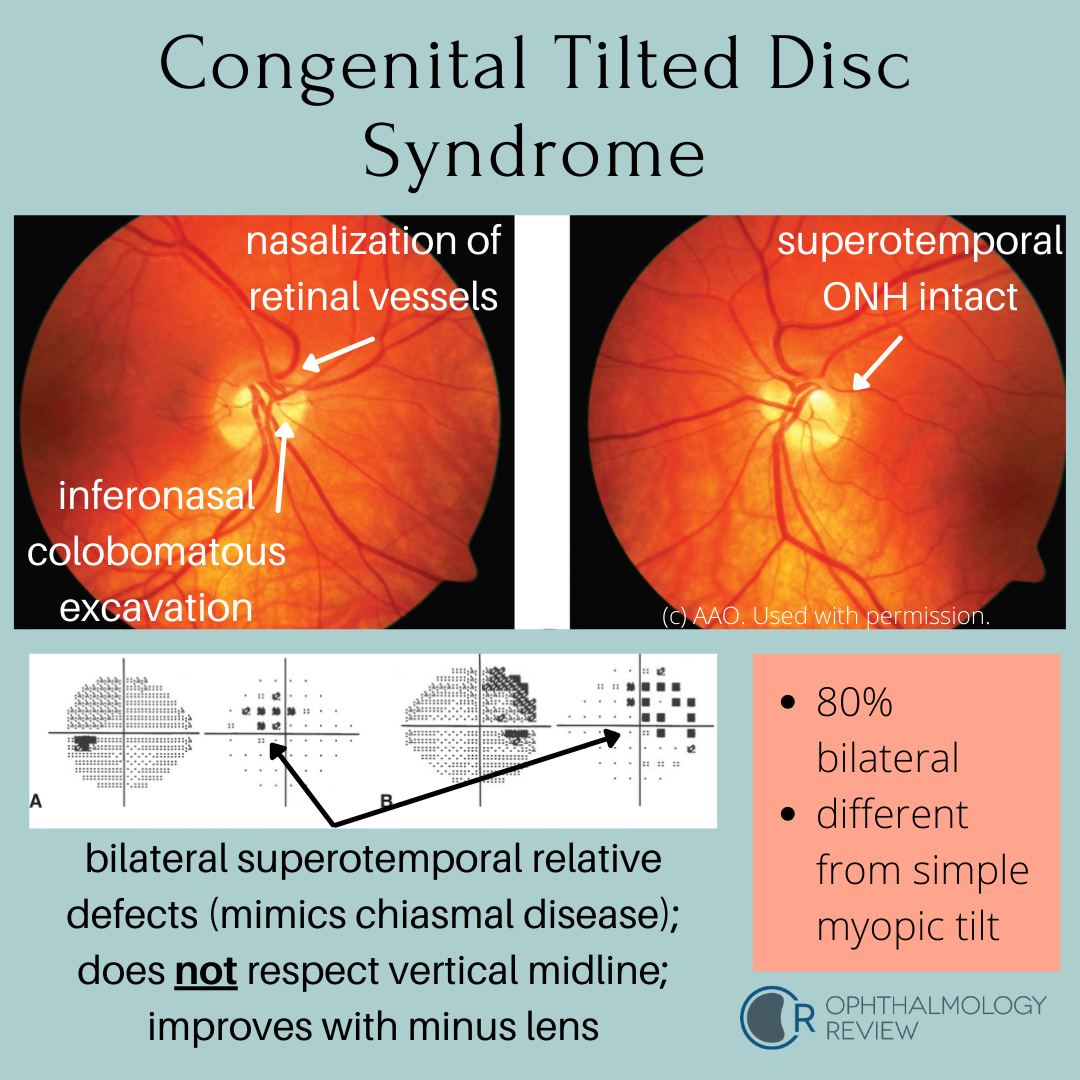This condition mimics early bitemporal hemianopia; as such, these patients often get MRIs to look for chiasmal disease. Because these depressions are relative due to refractive error (colobomatous excavation) and not absolute, it’s worth trying different lenses to see if the defects resolve - a compressive lesion such as a pituitary macroadenoma would not improve with different lenses.
Congenital Optic Disc Anomalies
Funny-looking optic discs are a "fun" diversion in an ophthalmology clinic (sarcasm implied here). What was initially a routine exam immediately turns into an agonizing "is this normal or not" exercise. Part of the angst that comes from seeing anomalous optic discs is that some of the congenital disc anomalies are associated with systemic diseases. If there is concurrent visual field loss or decreased visual acuity, the challenge becomes deciding if those defects in the visual system are due to the anomalous nerve, or if there is some other ophthalmic cause that we don't want to miss.

